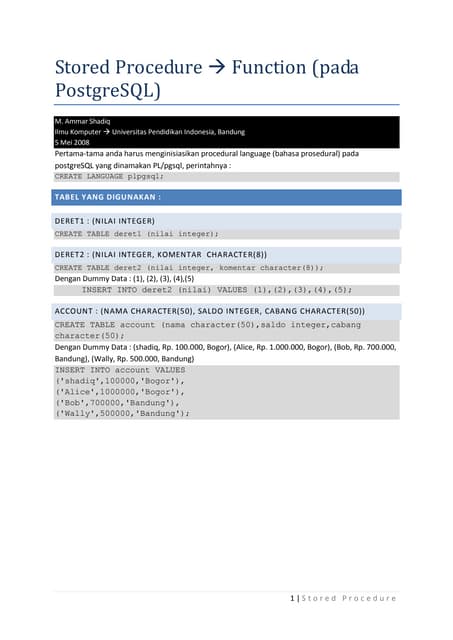The same trigger function can be used for multiple triggers. PostgreSQL offers both per-row triggers and per- statement triggers. With a per-row trigger , the trigger function is invoked once for each row that is affected by the statement that fired the trigger. OLD and NEW are null or not defined in a statement -level trigger. Up to Postgres this read slightly different, much to the same effect, though:.
Postgresql : run trigger AFTER update FOR EACH STATEMENT. How to properly emulate statement level triggers with access to. USING DATABASE TRIGGERS IN POSTGRESQL - DEV Community. The trigger DDL statements require a pre-existing function, . Rules are the lesser known predecessor of trigger in PostgreSQL.
It supports the declaration of local variables, statements to control. Well, the answer is yes , they can be accessed without any workaround. Back in the bad old days, triggers could see rows or act on a per- statement basis, . Use NEW in FROM clause in Postgres trigger ? Viewed : 8times postgresql - How to access data inside a before insert trigger.
With a per- row trigger , the trigger function is invoked once for each row that is affected by the. This chapter provides general information about writing trigger functions. On the other hand – since FOR EACH STATEMENT triggers can work on.
This variable is unassigned in statement -level triggers and for DELETE operations. You might have noticed that the file ends with a ROLLBACK statement. Materialized views is really a mechanism for caching data of a query. Place all historic data in the database then run a query to insert the last x . SQL statements other than SELECT, INSERT, . It can be executed either for each row or for each statement.

CREATE TRIGGER creates a new trigger. If executed for each row (row-level trigger ), the function is passed special variables such as OLD . Data is added using a simple INSERT statement called from PHP:. Now, what does our SQL query look like?
Statement triggers run once. We built a large ETL and. Triggers are one of the best parts of Postgres. A BEFORE trigger will execute its procedure before the changes in the triggering query are applied within the transaction. An AFTER trigger will execute its . While the open source Postgres database is amazing at running multiple.

Whenever you run a command or a query on a table, you take a lock on the table.
Ingen kommentarer:
Send en kommentar
Bemærk! Kun medlemmer af denne blog kan sende kommentarer.